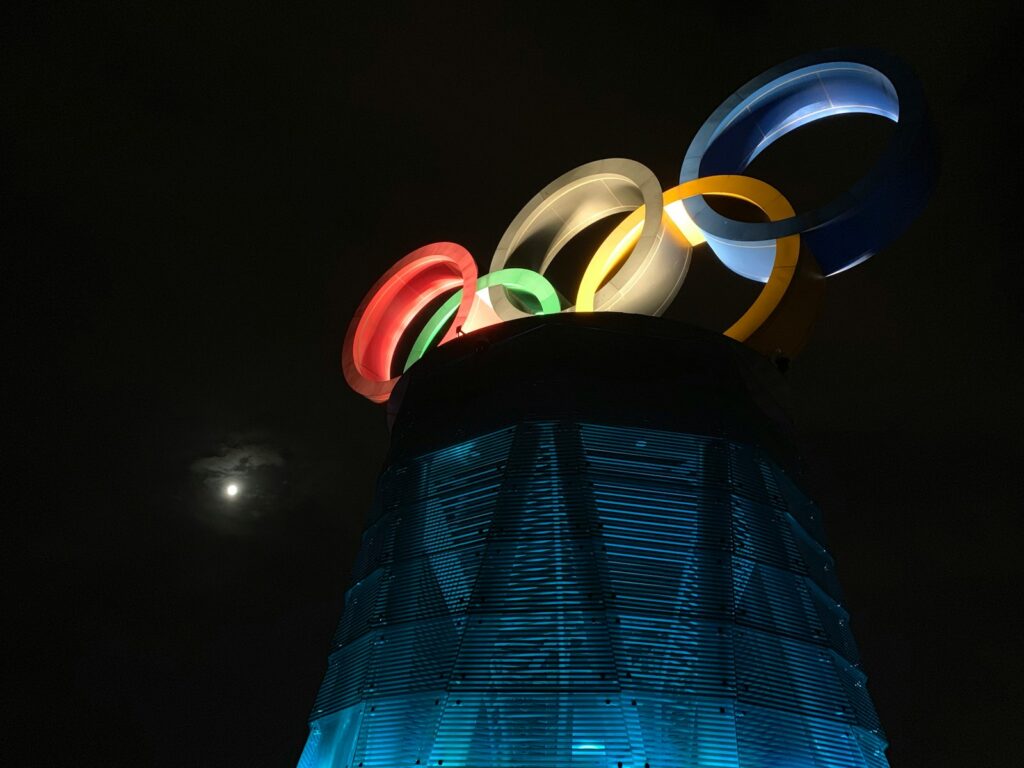
The Olympic Games represent the pinnacle of human athletic endeavor, a global spectacle where athletes strive for excellence, pushed by the pursuit of records and the dream of eternal glory. For generations, these contests have captivated the world, embodying ideals of fair play, perseverance, and unity. Yet, beneath the veneer of noble competition, a persistent shadow has always loomed: the specter of cheating, particularly through the use of performance-enhancing drugs.
Throughout its storied history, the Olympic Games have been regularly affected by “scandals, controversies and incidents,” with the deliberate use of banned substances standing out as one of the most damaging. These illicit attempts to gain an unfair advantage not only undermine the integrity of the individual athletes and their achievements but also cast a long, dark cloud over the purity of the sport itself. The consequences for those caught can be profoundly devastating, often resulting in the forfeiture of medals, the shattering of reputations, and the complete erosion of a carefully built legacy.
In this in-depth exploration, we delve into some of the most impactful doping scandals that have rocked the Summer Olympics. These cases are more than just footnotes in history; they are dramatic narratives of ambition, deception, and the harsh realities of a sport grappling with its own moral compass. Each story reveals the immense personal cost to the athletes involved, the unwavering determination of authorities to preserve fair competition, and the evolving landscape of anti-doping efforts that continue to shape the future of the Games.

### 1. The Trailblazing Disqualification of Hans-Gunnar Liljenwall (1968)
The 1968 Summer Olympics in Mexico City was a Games rich in cultural and political significance, but it also carved out a critical, albeit inglorious, milestone in the fight against doping. It was here, amidst the high-altitude challenges and burgeoning global awareness, that the first official Olympic disqualification for a banned substance would occur, setting a powerful precedent for all future competitions. This moment involved Swedish modern pentathlete Hans-Gunnar Liljenwall, whose story would become a cautionary tale for generations.
Liljenwall, a participant in the modern pentathlon – a grueling multi-disciplinary event comprising shooting, fencing, swimming, equestrian show jumping, and cross country running – made a seemingly innocuous decision before the shooting portion of his event. He consumed “two beers.” What might have been considered a casual pre-competition custom in another era, or simply a way to calm nerves, quickly became a focal point of the nascent anti-doping regime that was beginning to take hold in international sport.
The immediate consequence of this consumption was a positive test for alcohol, which, under the newly implemented and stricter anti-doping rules, constituted a banned substance. The ruling was swift and uncompromising: the Swedish team, which had achieved a third-place finish and was poised to receive bronze medals, was disqualified. The medals, earned through the combined efforts of the team, were stripped away, marking a profound and public fall from grace that reverberated throughout the sporting world.
This incident, while perhaps appearing minor in the annals of doping compared to later revelations of designer steroids, was monumentally significant. It marked “the first Olympic disqualification for a banned substance,” drawing a clear line in the sand regarding what was permissible and what was not. It served as a stark reminder that the Olympic movement was serious about upholding the integrity of competition and would not hesitate to punish even seemingly small infractions, especially when they involved substances capable of altering performance or judgment.
The Liljenwall case acted “as an impetus for future drug testing at the Olympics,” prompting an intense re-evaluation of testing protocols, the list of prohibited substances, and the overall vigilance required to ensure fair play. It effectively signaled the end of a more lenient era and ushered in a new age of rigorous scrutiny and scientific testing. The cost to Liljenwall and his teammates was not merely the loss of a medal; it was the indelible mark of pioneering an unwanted chapter in Olympic history, forever linking their names to the genesis of anti-doping enforcement.

### 2. Ben Johnson’s Sprint to Shame (1988)
The 1988 Seoul Summer Olympics will forever be remembered for one of the most dramatic and shocking controversies in sporting history: the meteoric rise and catastrophic fall of Canadian sprinter Ben Johnson. The men’s 100-meter dash is traditionally the marquee event of any Olympic Games, a visceral test of raw speed and power, culminating in a few breathtaking seconds that often define careers. In Seoul, Johnson delivered an unforgettable performance, smashing the world record and claiming the coveted gold medal in what was hailed as the “Race of the Century.”
The euphoria surrounding Johnson’s victory, a stunning display of athletic dominance over rival Carl Lewis, was short-lived and brutally shattered just days later. The athletic world, and indeed the entire global audience, was rocked by the bombshell news that Ben Johnson had “tested positive for stanozolol” following his historic win. Stanozolol, an anabolic steroid, was a clear and unambiguous banned substance, and its detection transformed a moment of unparalleled athletic triumph into an instant international scandal of epic proportions.
The consequences were immediate, devastating, and far-reaching. Johnson “was stripped of his gold medal for the 100 metres,” his world record was nullified, and his legacy was irrevocably tainted. The image of his powerful, triumphant sprint was replaced by an enduring symbol of deceit and the profound cost of cheating at the highest level of sport. This single event ignited a firestorm of debate about doping, the pressures on athletes, and the effectiveness of anti-doping measures.
The Ben Johnson scandal became a grim benchmark in the history of Olympic sports. It laid bare the pervasive threat of performance-enhancing drugs and exposed the vulnerabilities within the system that was supposed to ensure clean competition. The drama and emotion surrounding the event were palpable, as the world watched a celebrated hero fall from grace in the most public and humiliating way imaginable. It forced a global reckoning, compelling sports organizations to confront the issue with unprecedented seriousness.
The fallout from Seoul 1988 led to significantly enhanced drug testing protocols, increased funding for anti-doping research, and a more aggressive stance from international sports federations. Johnson’s spectacular fall underscored the critical importance of integrity in sport and solidified the resolve of the International Olympic Committee to combat doping relentlessly. It served as a powerful, albeit painful, lesson about the ethical responsibilities that come with Olympic glory, a narrative of triumph turned tragedy that continues to resonate decades later.

### 3. The British Trio’s Barcelona Banishment (1992)
The 1992 Summer Olympics in Barcelona, Spain, was a vibrant celebration, marking a new era of global unity following the end of the Cold War boycotts. Yet, even amidst this atmosphere of renewal and optimism, the perennial struggle against doping continued, culminating in a significant blow to the British Olympic team. This incident saw three promising athletes sent home in disgrace, underscoring the relentless vigilance of anti-doping authorities and the high stakes involved in competitive sport.
The unfortunate episode involved “three British athletes, sprinter Jason Livingston, weightlifters Andrew Davies and Andrew Saxton.” Their collective expulsion before the Games even truly got underway sent a stark message about the unwavering commitment of the International Olympic Committee to enforce its anti-doping regulations. It was a clear demonstration that no nation or athlete was exempt from scrutiny, and that violations would be met with swift and decisive action, irrespective of individual or national aspirations.
The reason for their banishment was explicit: the trio “were sent home after being tested positive for anabolic steroids and Clenbuterol.” These are potent performance-enhancing drugs, known for their ability to increase muscle mass, strength, and endurance. Their detection highlighted the ongoing battle against sophisticated doping regimes and the constant evolution required in testing methodologies to keep pace with illicit practices. The use of such substances directly contradicted the Olympic spirit and the principle of fair competition.
The decisive action taken against Livingston, Davies, and Saxton served as a powerful deterrent not only within the British contingent but across the entire Olympic community. It illustrated that the consequences of doping were severe and could end Olympic dreams prematurely, even before an athlete had a chance to step onto the competition stage. This dramatic pre-Games expulsion underscored the intense pressure on athletes and the temptations that could lead to desperate measures.
This collective disqualification cast a significant shadow over the British team’s preparations and further cemented the narrative of doping as a persistent threat to the integrity of the Games. It was not merely three individual athletes losing their opportunity; it was a broader statement from the IOC reaffirming its commitment to a clean playing field. The Barcelona incident joined a growing list of anti-doping victories, emphasizing the global nature of the fight and the high price athletes pay for choosing the path of illicit enhancement.
The previous section highlighted the foundational moments in the Olympic fight against doping, from Liljenwall’s inadvertent beer to Ben Johnson’s seismic fall and the swift banishment of the British trio in Barcelona. These early cases, each significant in their own right, laid the groundwork for an anti-doping apparatus that would only grow more sophisticated and uncompromising. As the new millennium approached, the stakes became even higher, and the pursuit of a clean sport escalated, leading to some of the most heart-wrenching and high-profile casualties in Olympic history. The battles fought against performance-enhancing drugs moved beyond simple detection, exposing complex networks of deceit and demanding an unprecedented level of vigilance from international sports bodies. The stories that follow underscore this intensifying conflict, showcasing how even the brightest stars could fall from grace, leaving behind legacies forever tarnished.

### 4. Marion Jones’s Tarnished Legacy (2000)
The turn of the millennium brought with it hopes of a new era for sports, yet the Sydney 2000 Summer Olympics would eventually become synonymous with one of the most painful and far-reaching doping scandals in track and field. American sprinter Marion Jones, a beacon of athletic prowess and charisma, had captured the world’s imagination with her electrifying performances. She was poised to achieve an unprecedented five gold medals, a feat that would have solidified her as one of the greatest Olympic athletes of all time.
Her incredible showing in Sydney saw her secure an astonishing five medals: three golds in the 100-meter sprint, 200-meter sprint, and 4×400 relay, alongside two bronzes in the long jump and 4×100 relay. These were moments of pure athletic triumph, broadcast globally, celebrating what appeared to be the zenith of human speed and agility. Jones embodied the Olympic ideal, her victories inspiring millions and propelling her into superstardom, seemingly destined for an untarnished place in sporting lore.
However, the glittering façade began to crack years later, leading to a devastating confession that shocked the sports world to its core. In December 2007, after years of denials and intense speculation, Marion Jones finally admitted to “anabolic steroid use.” This admission was not merely a personal revelation; it was directly linked to the infamous BALCO scandal, a sophisticated doping ring that had supplied performance-enhancing drugs to numerous elite athletes across various sports. Her association with BALCO cemented the narrative of a systemic problem, rather than isolated incidents.
The consequences for Jones were immediate and catastrophic. The International Olympic Committee (IOC) acted decisively, stripping her of all five medals she had won at the Sydney 2000 Games. This unprecedented loss included the three gold and two bronze medals, effectively erasing her entire Olympic achievement from the record books. The IOC’s action extended even further, officially disqualifying Jones from her fifth-place finish in the Long Jump at the 2004 Summer Olympics, highlighting the long shadow cast by her deception.
Jones’s fall from grace was a poignant and tragic saga. Once one of the most celebrated and famous athletes, her legacy became inextricably linked with deceit and the profound cost of cheating. The BALCO case itself encompassed “more than 20 top level athletes,” including her ex-husband, shot putter C.J. Hunter, and 100 m sprinter Tim Montgomery, the father of her first child. Her story remains a powerful reminder of the deep personal and professional toll exacted when the pursuit of victory compromises integrity, devastating not only individual careers but also the trust placed in the very spirit of fair competition.

### 5. Lance Armstrong’s Olympic Eradication (2000)
For years, Lance Armstrong was a figure of unparalleled inspiration, not just in the world of cycling but across the globe. His incredible seven consecutive Tour de France victories, achieved after a courageous battle with cancer, painted him as the ultimate comeback kid, a testament to human resilience and an unwavering will to win. While his cycling career was predominantly defined by his Tour de France triumphs, his presence at the Olympic Games, particularly in 2000, added another layer of prestige to his already legendary status.
At the Sydney 2000 Summer Olympics, Armstrong competed in the individual time trial, a grueling event that demands extreme endurance and singular focus. It was here that he earned an Olympic bronze medal, a significant achievement that contributed to his image as a dominant force in the sport. This medal, a symbol of Olympic excellence, was celebrated alongside his other monumental successes, further solidifying his place in the pantheon of sports heroes and adding to his public narrative of overcoming adversity.
However, the edifice of his heroic image began to crumble as widespread and persistent allegations of doping intensified over more than a decade. The detailed investigations and compelling evidence that emerged eventually painted a starkly different picture of his career. The scale of the deception, which included systematic use of performance-enhancing drugs and sophisticated cover-ups, shocked the world and led to a complete reassessment of his achievements.
On January 17, 2013, the International Olympic Committee (IOC) took decisive action, officially removing “Armstrong’s results in the 2000 Summer Olympics from its record books.” This was more than just a procedural update; it was a profound symbolic eradication of his Olympic presence. The IOC’s ruling also explicitly “requested the return of his bronze medal from the time trial,” a stark demand that underscored the gravity of his offenses and the unforgiving stance of sports authorities against doping.
The removal of Armstrong’s Olympic medal served as a potent symbol of the wider scandal that engulfed his career and, by extension, professional cycling. It was a clear statement from the Olympic movement that illicit gains would not stand, regardless of how celebrated the athlete or how long their facade of innocence had endured. His story transformed from one of inspiring triumph over adversity to a cautionary tale about the corrosive nature of systemic doping, leaving behind a legacy forever shadowed by controversy and the ultimate cost of his deceptive quest for glory.

### 6. Andreea Răducan’s Tragic Medicinal Misstep (2000)
The Sydney 2000 Summer Olympics, while unfortunately remembered for other doping controversies, also presented a particularly poignant and heart-rending case involving Romanian gymnast Andreea Răducan. At just 16 years old, Răducan was a rising star, a seemingly innocent figure whose youthful exuberance and athletic grace had captivated audiences. She had just achieved the pinnacle of her young career, earning a gold medal as part of the victorious Romanian team in the all-around gymnastics competition, a moment of immense national pride and personal triumph.
Her joy, however, was tragically short-lived. Following the all-around final, Răducan underwent a routine drug test, which subsequently returned a positive result for pseudoephedrine. This substance, commonly found in over-the-counter cold and flu remedies, was “at the time a prohibited substance” under anti-doping regulations. The context indicates that this was not a deliberate attempt to gain an unfair performance advantage in the same vein as anabolic steroids, but rather a consequence of taking medication for a common cold, prescribed by her team doctor.
Despite the seemingly innocuous nature of the substance and the explanation provided, the strict liability rules of anti-doping meant that the presence of any banned substance, regardless of intent, resulted in disqualification. The International Olympic Committee, adhering to its rigorous anti-doping policies, made the agonizing decision to strip Răducan of her gold medal. This made her “the first gymnast to be stripped of a medal after testing positive for pseudoephedrine,” an unfortunate and painful distinction.
The ruling ignited a passionate debate about the fairness and proportionality of anti-doping regulations, especially when a young athlete’s career and reputation were irrevocably impacted by what was widely perceived as an innocent mistake rather than a deliberate act of cheating. Many sympathized with Răducan, viewing her as a victim of overly stringent rules, particularly given the small dosage and the nature of the substance. Yet, the IOC maintained its stance, emphasizing the importance of a level playing field and the need for athletes and their support staff to be fully aware of all prohibited substances, even common medications.
Răducan’s story stands as a stark reminder of the unforgiving nature of Olympic anti-doping regulations. It highlights the immense responsibility placed on athletes, even teenagers, and their teams to ensure that absolutely no banned substances enter their system. Her tragic medicinal misstep underscores the delicate balance between protecting the integrity of the sport and the human element, leaving a lasting impression of a young talent whose Olympic dream was shattered by a technicality, leaving a permanent mark on her otherwise brilliant career.
The stories of Liljenwall, Johnson, the British trio, Marion Jones, Lance Armstrong, and Andreea Răducan collectively paint a vivid, often painful, picture of the persistent battle against doping in the Olympic Games. From accidental infractions to systematic deception, each case has contributed to the evolution of anti-doping measures, pushing authorities to innovate and enforce stricter rules. These narratives are not just about fallen heroes or stripped medals; they are crucial chapters in the ongoing saga of sports, demonstrating the relentless pursuit of fairness and the profound human cost when the spirit of competition is betrayed. The Olympic movement continues its unwavering commitment to upholding integrity, ensuring that future generations of athletes can truly strive for excellence on a level playing field, where genuine triumph can shine without the shadow of deceit.




